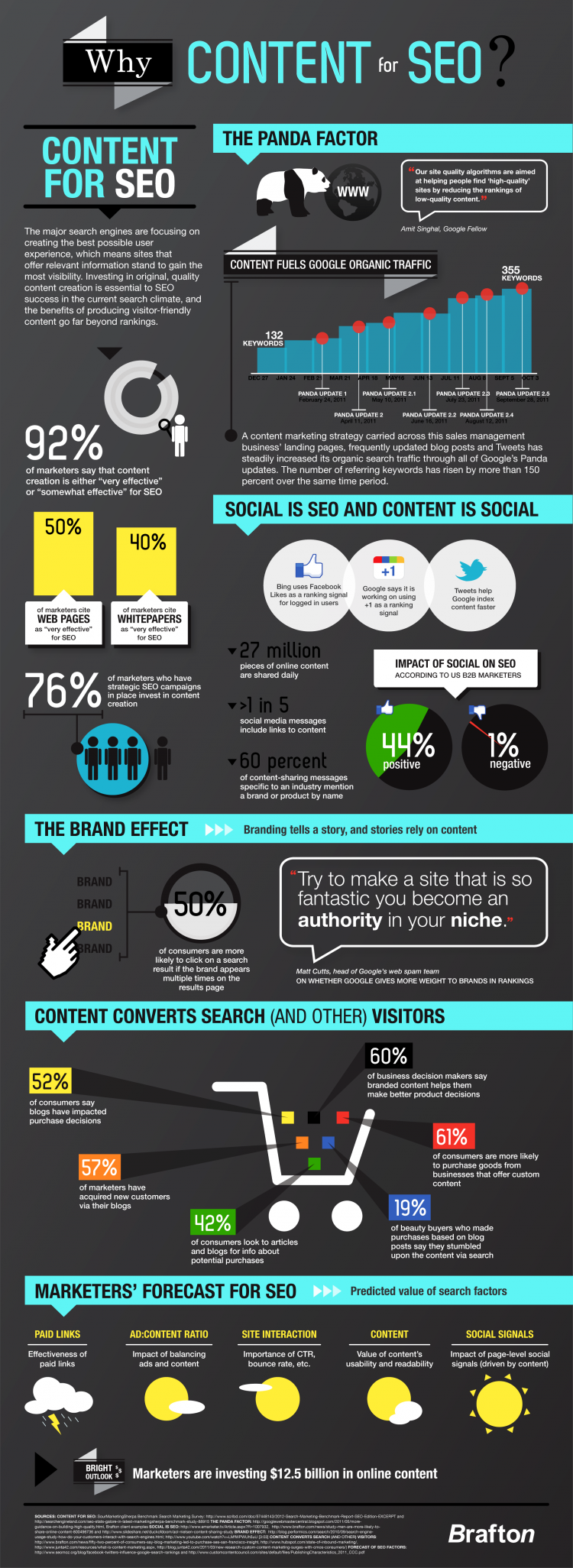Since starting this blog I have focused on two key activities. Creating content that is relevant and adds value. The other was building tribes on social networks.
I didn’t focus on optimising my site for search engines also known as search engine optimisation (SEO) and playing games with Google’s search algorithm. Begging for links from other websites was not on my agenda. It was about producing content that people voted on with “Retweets”, “Likes”, “Plus ones” and social shares. It was the relentless pursuit of content creation that resonated on a social web.
You know when your content hits the spot as people vote with the “share buttons”. This social voting is visible and creates social proof. Turning up to a blog with hundreds of retweets is a sure signal that “here lies content that you should check out“.
Creating quality content is hard work and sometimes the brain burns while working in the blogging laboratory as headlines are crafted and content is structured to be easy to read and understood.
The evolving social web also told me that people wanted more highly visual communication and engagement with infographics and enticing images becoming an integral and vital part of the content mix.
Social voting visitors were rewarded with blog posts that included not just text but images, PowerPoint presentations on SlideShare and infographics as well as the ever present text.
Google is Hunting for Quality Content
In the last 2 months I have noticed a significant spike in traffic from search engines to the blog and I am talking figures of a 15% increase or over 2,000 more hits per day. My blogging and content creation activities have not changed but it appears that Google’s search engine has. The Panda and Penguin updates are starting to produce some substantial changes to who ranks high in Google. Google’s aim is to remove the content farms that add no value and replicate poor quality content.
Google changes its search engine formulas over 500 times a year in the pursuit of delivering results that are relevant to “you” the user of search. Google says that it search engine is about finding and ranking high in search results, websites and blogs that provide a high quality experience for your readers.
“Search is a complicated and evolving art and science, so rather than focusing on specific algorithmic tweaks, we encourage you to focus on delivering the best possible experience for users.” – Google
Creating the best possible experience for users comes down to the key element of quality content creation. That one activity alone will make a major difference in pushing your website and blog higher in search results.
For a great visual on how content and SEO work together here is an Infographic to keep your neurons ticking over.

23 Hints for Creating Compelling Content for Search Engines
Google’s challenge is to use mathematical formulas to determine what provides a great user experience and what content is compelling and unique. They are attempting to rank this type of content high in their search engine.
These are the key elements gleaned from 23 guidelines from Google’s blog to provide guidance for creating content that begs to be read,viewed and shared.
- Would you trust the content in this article?
- Is this article written by a thought leader who is passionate about there topic?
- Does the blog or website have duplicate or redundant articles on the same or similar topics with slightly different keyword variations?
- Would you trust this site enough to give your credit card information?
- Is the spelling in the article correct?
- Is the content written for search engines or is it created for creating reader interest?
- Does the article provide original content or information such as research and expert analysis?
- Does the page provide better value when compared to other pages in search results?
- Is the quality control of the text article obvious?
- Is the article presenting both sides of the story?
- Is the blog a respected and recognized authority on the topic?
- Has the content been scraped and sourced from many writers and websites, then spread across a network of almost faceless network of sites (also known as content farms)?
- Was the article edited with care or or is it sloppy?
- If you were looking for health advice would you trust the content of the website?
- Is the brand viewed as an authoritative source when mentioned by name?
- Is the content comprehensive and broad?
- Is the information obvious or does it provide in depth insights?
- Would you want to bookmark it to read later and also so valuable that you would want to share with it with friends?
- Is the blog or website full of ads that distract you from reading the articles and view the content?
- Is the quality of the article so good that you would expect to read it in a magazine or printed publication?
- Are the articles brief and superficial with little specific detail that adds real value?
- Is the blog created with great care and attention to detail?
- Would users complain when they see pages from this site?
Google is attempting to use its algorithms to detect this type of quality content and this task as they said earlier is “part science and part art“. They are providing strong hints on what type of content you should be creating. This is the end game and it appears that they are having success in moving in that direction but there is more work to be done.
They are also using social signals to rank content on its quality and attractiveness to readers and viewers.
So keep creating content that is so good that it begs to be read, viewed and shared.
That should be your goal!
What About You?
What sort of content are you creating?
Is it interesting, helpful and original?
Does it provide insights? Is it extensive and detailed?
Do you present information a variety of multi-media formats on your website and blog.
Look forward to hearing your stories about Google, social and content.
Written by Jeff Bullas
